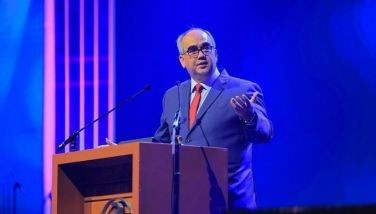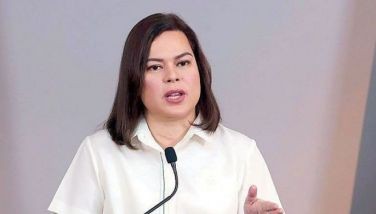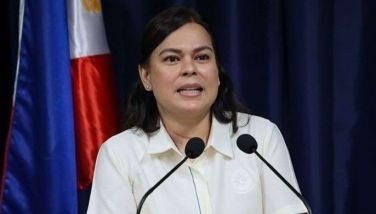Darlings no more
Last year, we wrote about how the geographical location of the Philippines made it “the best house in a bad neighborhood†(see Best House in a Bad Neighborhood, Sept. 2, 2013). Thus, in spite of our country’s stellar economic performance, the Philippines was not spared when hedge funds and other foreign investors started deleveraging and selling emerging market assets across the board in the wake of QE tapering.
Neighborhood widens
In the same article, we discussed the different problems of our Asian neighbors (China, India, Indonesia, Thailand and Malaysia). In the months that followed, these countries instituted various policies to put their fiscal houses in order. Unfortunately, another wave of bad news hit us in January. Argentina, a perpetually mismanaged economy, devalued its currency by 12 percent in just one day. This put the spotlight on South American countries, such as Brazil, Mexico and Venezuela, which each have their own set of problems. This led to another sell-off in emerging market assets, including Russia and Turkey. This goes to show that the Philippines’ neighborhood has widened to include not only Asia but other emerging markets as well.
Monickers galore
Once upon a time, Brazil, Russia, China, India and South Africa were the darlings of the investment community. Investing in these countries became so popular that they were given the catchy monicker BRICS. Now that they are in the midst of crisis, these nicknames have now become synonymous to a reversal of fortune. See below a table showing the various monickers for certain groups of countries:

Unfortunately, these once bright prospects are darlings no more. In fact, these monickers have now become investment themes that investors have shunned.
$12-billion outflow in 1 month
The record outflows are alarming. In January 2014 alone, $12 billion flowed out of emerging markets. Compare this to the $15-billion outflows recorded for the entire 2013. This stampede out of emerging markets led to outflows in the Philippines as well, which saw net foreign selling of P 4.8 billion last month. Given our country’s one percent weight in the emerging markets ETF (EEM), we cannot be immune to the emerging markets selloff.
Watching the peso
Whenever a significant event happens, we receive many questions from our readers asking about where the stock market will go. The second most frequently asked question though is about the Philippine peso. Given the strong interest in this topic, we have written about it many times in the past. The significant foreign selling we see in our stock market points towards weakness in the currency. However, the main culprit would be the strong dollar. Because the fundamentals of the dollar have considerably improved, the peso depreciated along with most other currencies (see It’s the strong dollar, stupid, June 24, 2013).
Peso bounced from support
In those articles, we also said that peso will trade in the PhP 44-46/$ range. Thus, when it was nearing strong support of 45.50 to 46, we did not waver with our stand despite many foreign banks saying that they see the peso going to 48. We also said that the peso is already in the upper zone of the trading range. Our conviction was further strengthened when after hitting 45.48, the peso has since pulled back to 44.99 as of last Friday.
The prudent BSP
Although the peso has weakened significantly ever since QE tapering talks came about last May 22 , the BSP has remained prudent in carrying out its mandate. Even if it intervenes from time to time in order to reduce the volatility of our currency, the BSP adhered to its mandate of letting market forces prevail. Despite other countries like India, Turkey and South Africa raising interest rates, the BSP did not panic or overreact to last week’s inflation figure of 4.2 percent. In explaining the rationale behind the central bank’s decision, BSP Governor Amando Tetangco Jr. had this to say –
“Tweaking policy rates to address short term financial market volatility could likely create unintended consequences and heighten volatility even more. Policy rate changes are not necessarily the most appropriate response at this time.â€
To raise or not to raise?
With inflation now practically at the upper end of the BSP’s range, Tetangco has signalled that the BSP may raise rates in the future. Other countries have raised interest rates in order to stem capital outflows, slow the sharp depreciation in their currency and arrest the deterioration of their current account deficit. This question on whether interest rates should be raised or not is something that the BSP and economists have to discuss. However, it is important to note that the Philippines does not have these problems. On the contrary, we have a current account surplus and near-record high foreign exchange reserves.
Count our blessings
QE tapering basically exposed the weakness of certain countries. While all countries have problems of their own, we should count our blessings. Our fiscal and monetary policies were crafted well by the BSP and the Finance Department, and the results are quite evident. The political arena is also being managed well. Despite the various political issues facing President Benigno Aquino, Jr. and his government, he still has the approval of the people. In order to keep our spot as the best house in the bad neighborhood, it is imperative that these policies and reforms continue. We have to be vigilant in ensuring that our current and future leaders do not undo all the progress that we have achieved these past years.
Philippines will be differentiated
Despite all the volatility, the Philippine market is showing resiliency. In our presentations, we showed that stock markets in countries where economies are managed properly eventually recover from whatever crisis they face. In fact, we view this emerging market scare caused by Argentina, Turkey and Ukraine to be less critical than the previous Asian, US and European debt crises. We are confident that if we continue to play our cards right, there will come a time when the Philippines will be differentiated from all the other emerging market countries that have their own unique problems.
The emerging market contagion, its effect on the stock market, our investment strategy and our forecast for the Philippine peso and the PSE index in 2014 are the topics we will be discussing in our upcoming investors’ briefing on March 8.
Please visit our online trading platform at www.wealthsec.com or call 634-5038 for detailed stock market research. You can also visit www.philequity.net to learn more about the Philequity Fund and view our archived articles. You can email us at feedback@philequity.net for feedback on the Philequity Corner articles.
- Latest
- Trending






























